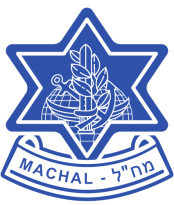At the conclusion of World War II, most Jewish survivors of the Nazi Holocaust could not remain in Europe with its terrible memories; many opted to build a new life in the Jewish homeland. The British escalated their restrictions on Jewish immigration and settlement in Palestine. The Yishuv (the Jewish community in Palestine) responded by increasing the activities of the clandestine network of rescue operations (started in 1934) known as “Aliyah Bet”.
The availability of vessels in Europe, most of which were small, soon proved insufficient to transport the large number of survivors who wanted to come to Palestine. In the United States, on the other hand, there was a surplus of ships that could be purchased inexpensively, and persons willing to pay for them, as well as experienced seamen ready to man them.
Ten ships were purchased in the United States and manned by American and Canadian volunteers. These ships played a significant role in the post-\World War II “Aliyah Bet” fleet. From mid-1946 until May 1948 when Israel became an independent State, they carried some 33,000 refugees, about half of the refugees leaving Europe. These vessels, aside from two, were old; four were pre-WW I vintage. Yet four of them were to become the first warships of the nascent Israel Navy, and the two largest of the ten ships, the Pan York, and the Pan Crescent, later joined the Zim Navigation Company’s fleet.
Some 240 young men, mostly Jews, volunteered to man these ships. Most were recently demobilized World War II servicemen. A few were merchant seamen, and some with pre-World War II experience. A number were officers who had been trained in the Merchant Marine academies and schools. Most had no sea experience or training.
The sixth President of Israel, Chaim Herzog, told a reunion of “Aliyah Bet” volunteers in 1967, “Out of six million American Jews, it was you who jumped into the breach”.
The “illegal” ships were:
1. The Josiah Wedgewood (originally the Beauhamois), a Canadian corvette.
2. The Hagana (originally the Norsyd), also a Canadian corvette.
3. The Haim Arlosoroff (originally the Ulua), a coast guard cutter from the 1920s.
4. The Ben Hecht (originally the Abril) had been a private yacht, a smuggler’s boat and a coast guard vessel.
5. The Hatikva (originally the Tradewinds 1908) a coast guard cutter.
6. The Exodus 1947 (originally the President Warfield), a Chesapeake Bay excursion ferry.
7. The Geula (originally the Paducah, )a coast guard training vessel.
8. The Jewish State (originally the Northland), a coast guard icebreaker.
9. The Kibbutz Galuyot (originally the Pan York), a cargo vessel.
10. The Atzmaut (originally the Pan Crescent), also a cargo vessel.
Note: An additional vessel, the Calanit (originally the Mala) had served as presidential yacht for Presidents Theodore Roosevelt to Herbert Hoover. She is not included in the roster of “Aliyah Bet” ships since she arrived on 11th July 1948, after the establishment of the State.
Each of these ships was eventually intercepted and captured by the British forces. The refugees were interned in transit camps, initially in Atlit (in Palestine) and later in Cyprus. The 4,530 passengers of the Exodus 1947 were returned to Germany. An American volunteer (William Bernstein), a mate on the ship, was clubbed to death on the Exodus 1947 by the British boarding party.
The routes sailed from America by some of the Aliyah Bet vessels:
| Josiah Wedgewood | Arlosoroff | |
| New York | Baltimore | |
| Azores | Azores | |
| Gibraltar | Marseilles | |
| Genoa | Le Havre | |
| Savona | Copenhagengree | |
| Haifa | Treilborg | |
| Atlit | Algiers | |
| Philippeville | ||
| The refugees who survived were interned in transit camps in Cyrus | Sousee | |
| Callipoli | ||
| Metaponto | ||
| Haifa (Bat Galim) | ||
| The refugees who survived were interned in transit camps in Cyprus |
| Haganah | Ben Hecht | |
| New York | Baka | |
| Sete | Haifa | |
| Transfer Point – Cyprus | Atlit | |
| Mylos | New York | |
| Split | Azores | |
| Baka | Port de Bouc | |
| Haifa | Haifa | |
| Atlit | Cyprus | |
| The refugees who survived were interned in transit camps in Atlit. | The refugees who survived were interned in transit camps in Cyprus. |
| Hatikvah | Exodus 1947 | |
| Miami | Baltimore | |
| Charleston | Cape atteras | |
| Baltimore | Norfolk | |
| Azores | Philadelphia | |
| Lisbon | Azores | |
| Marseilles | Marseilles | |
| Port de Bouc | Portovenere | |
| Portovenere | Port de Bouc | |
| La Spezia | Sete | |
| Bogliasco | Haifa | |
| Bocco del Magre | Hamburg | |
| Haifa | ||
| Cyprus | ||
| The surviving refugees and the American crew were interned in transit camps in Cyprus. | The surviving passengers were returned to Germany. |
| Pan York | The Jewish State | |
| USA | Miami | |
| Venice | Baltimore | |
| Marseilles | Azores | |
| Safi | Marseilles | |
| Brest | Port de Bouc | |
| Rouen | Bayonne | |
| Marseilles | Bone | |
| Connstanza | Vama | |
| Buras | Burgas | |
| Aegean Sea | Aegean Sea | |
| Famagusta | Haifa | |
| Cyprus | Cyprus | |
| The surviving refugees were interned in transit camps in Cyprus. | The surviving refugees were interned in transit camps in Cyprus. |
Source: “The Jews Secret Fleet” published by Gefen Publishing House.
Reprinted with permission of the author, Murray Greenfield.

